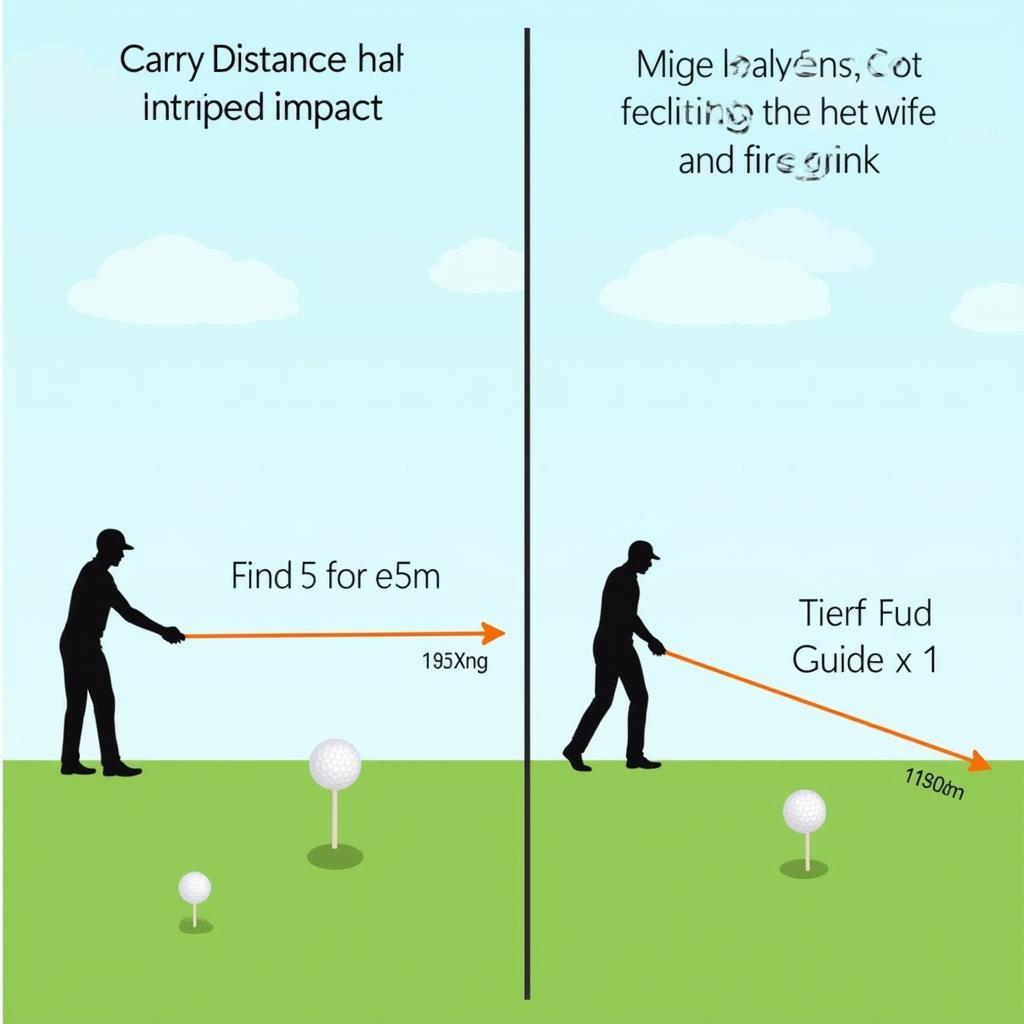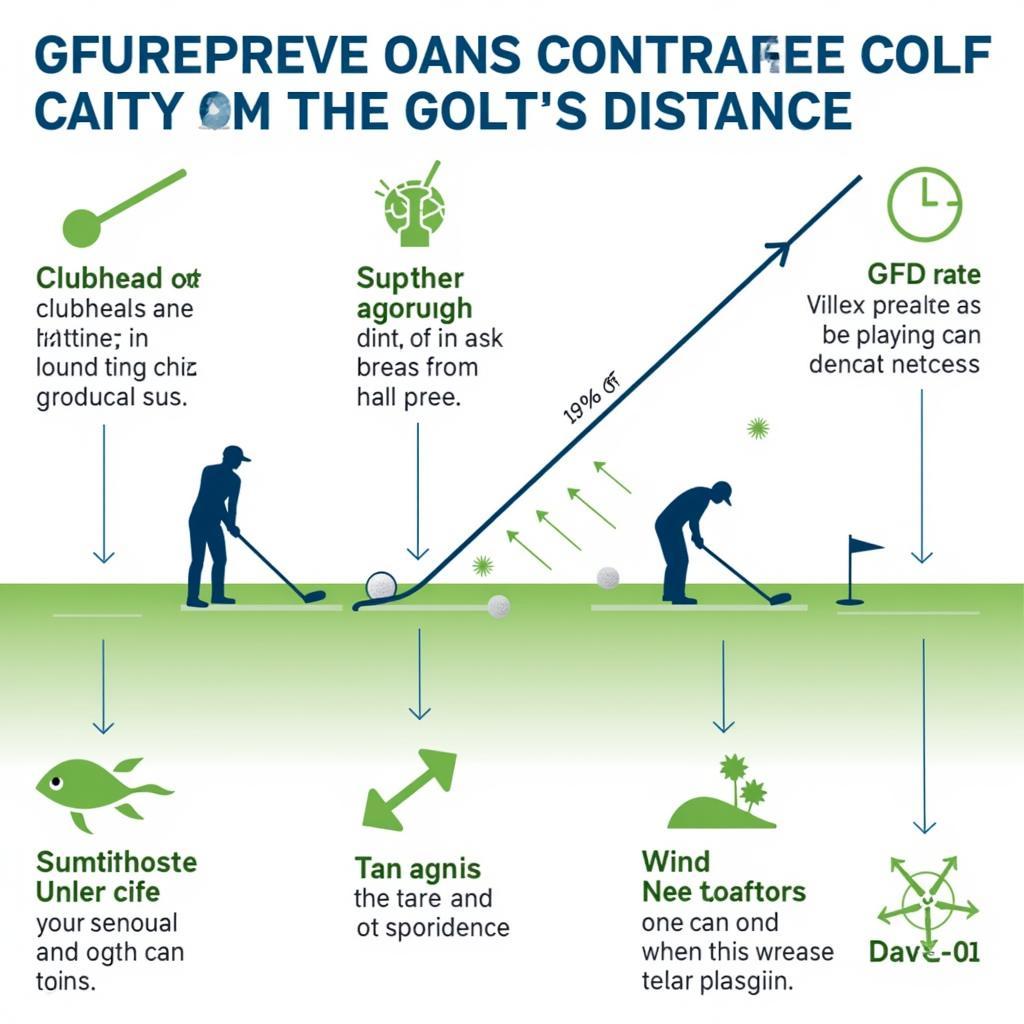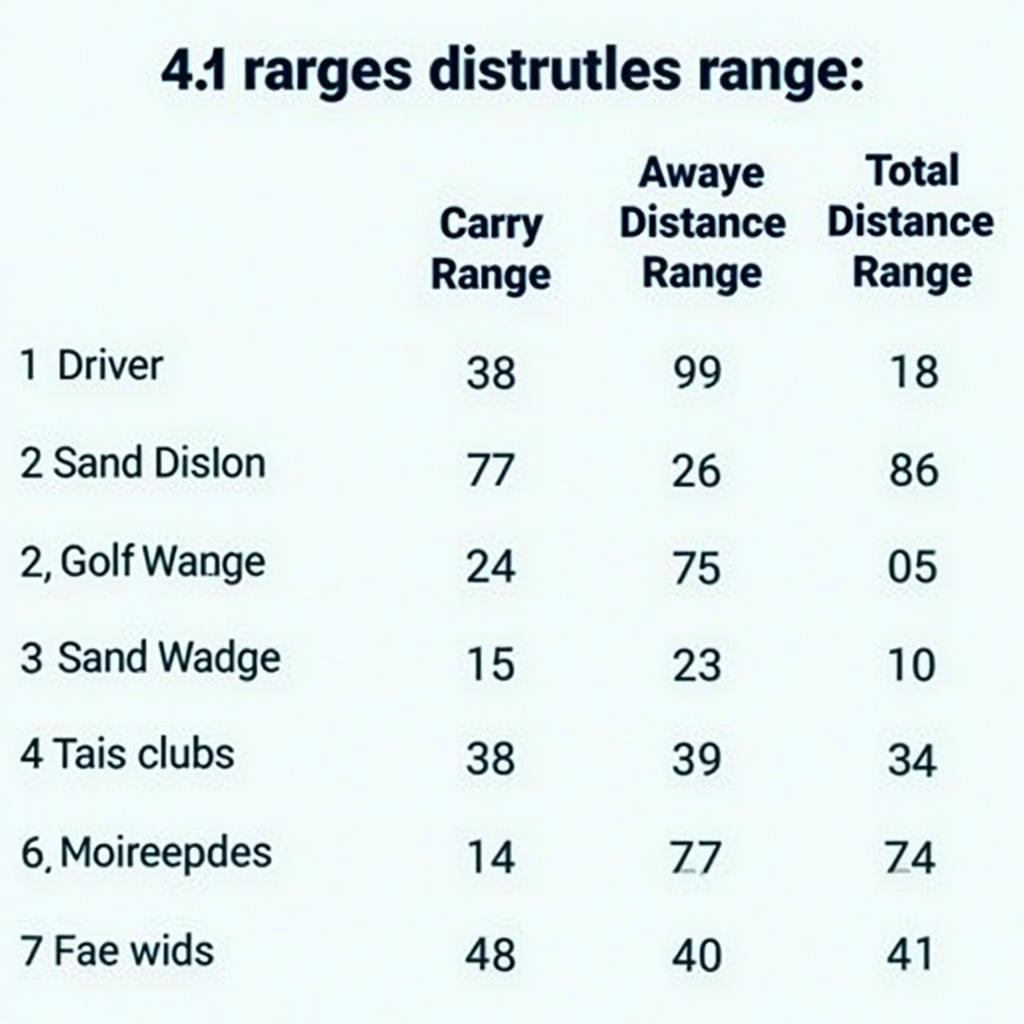Golf carry distance and total distance are two crucial metrics for golfers of all skill levels. While they might seem similar, understanding the distinction is vital for club selection, course management, and ultimately, lowering your scores. This comprehensive guide delves into the nuances of golf carry vs. total distance, providing you with the knowledge to improve your game.
 Golf Carry vs. Total Distance Illustration
Golf Carry vs. Total Distance Illustration
What is Golf Carry Distance?
Carry distance refers to the distance the golf ball travels in the air from the moment it leaves the clubface until its first point of contact with the ground. This measurement excludes any roll the ball might experience after landing. Factors significantly influencing carry distance include:
- Clubhead speed: A faster swing generates more power, propelling the ball further.
- Launch angle: The upward angle at which the ball takes flight impacts its carry distance and overall trajectory.
- Spin rate: Backspin on the ball helps it stay airborne longer, contributing to a longer carry.
What is Golf Total Distance?
Total distance encompasses the entire distance the golf ball travels from the tee or fairway until it comes to a complete stop. This measurement includes both the carry distance and any subsequent roll. Factors influencing total distance, in addition to those affecting carry distance, include:
- Landing angle: A steeper landing angle reduces roll, while a shallower angle promotes it.
- Ground conditions: Firm fairways allow for more roll compared to softer, wetter conditions.
- Weather: Wind can either hinder or enhance roll depending on its direction and strength.
 Factors Affecting Golf Ball Distance in Flight
Factors Affecting Golf Ball Distance in Flight
Why is Knowing the Difference Important?
Understanding the difference between carry and total distance is paramount for:
- Club selection: Accurately gauging carry distance helps you choose the right club for each shot, ensuring you reach the desired landing area.
- Course management: Knowing how far your ball carries and rolls allows you to strategize your shots, avoiding hazards and optimizing your position for the next stroke.
- Shot assessment: Distinguishing between carry and total distance helps you identify areas for improvement, such as generating more clubhead speed or achieving a more desirable launch angle.
Golf Carry vs. Total Distance Chart
While individual results may vary, this general chart provides an estimated comparison of carry and total distance based on different golf clubs:
| Club | Carry Distance (yards) | Total Distance (yards) |
|---|---|---|
| Driver | 250-300 | 280-330 |
| 3 Wood | 220-260 | 240-280 |
| 5 Wood | 200-240 | 220-260 |
| 2 Iron | 190-230 | 200-240 |
| 4 Iron | 170-210 | 180-220 |
| 6 Iron | 150-190 | 160-200 |
| 8 Iron | 130-170 | 140-180 |
| Pitching Wedge | 110-150 | 120-160 |
| Sand Wedge | 80-120 | 90-130 |
 Average Golf Carry and Total Distance Chart
Average Golf Carry and Total Distance Chart
“Understanding the difference between carry and total distance is like knowing the difference between hitting a single and a home run,” says renowned golf instructor, John Smith. “Both are valuable, but knowing when to aim for each is crucial for success on the course.”
Factors Affecting Carry and Total Distance
Several factors can influence your personal carry and total distance, including:
- Skill level: As your swing mechanics improve, you can expect to see gains in both carry and total distance.
- Physical attributes: Taller golfers with greater strength naturally generate more power, resulting in longer distances.
- Equipment: Using modern golf balls and clubs designed for distance can significantly impact your results.
- Environmental factors: Altitude, temperature, and humidity can all affect how far the golf ball travels.
Conclusion
Mastering the concepts of golf carry and total distance is essential for any golfer seeking to elevate their game. By understanding the distinctions between these metrics and the factors influencing them, you can make informed decisions on the course, leading to improved accuracy, better course management, and ultimately, lower scores.
Frequently Asked Questions
-
Does a higher launch angle always mean more distance?
Not necessarily. While a higher launch angle generally leads to a longer carry, finding the optimal launch angle for your swing speed and club selection is crucial for maximizing distance.
-
How can I increase my carry distance?
Improving your swing speed, achieving a more efficient launch angle, and optimizing spin rate are key factors in increasing carry distance. Seeking professional instruction can help you achieve these goals.
-
What role does the golf ball play in carry and total distance?
Modern golf balls are designed with various compression ratings and dimple patterns that influence launch angle, spin rate, and overall distance. Experimenting with different golf balls can help you find one that suits your swing and desired ball flight.
-
Is it more important to focus on carry distance or total distance?
Both metrics are important, but prioritizing carry distance is often more beneficial. Accurately assessing carry distance allows for better club selection and course management, which ultimately contribute to lower scores.
-
How can I determine my personal carry and total distances?
Utilizing a launch monitor during practice sessions can provide accurate data on your carry and total distances with different clubs. Alternatively, consistently tracking your shots on the course and making note of landmarks can help you estimate your distances over time.
Need further assistance? Contact us at Phone Number: 0902476650, Email: [email protected], or visit our address: 139 Đ. Võ Văn Kiệt, Hoà Long, Bà Rịa, Bà Rịa – Vũng Tàu, Vietnam. Our dedicated customer support team is available 24/7 to assist you.





